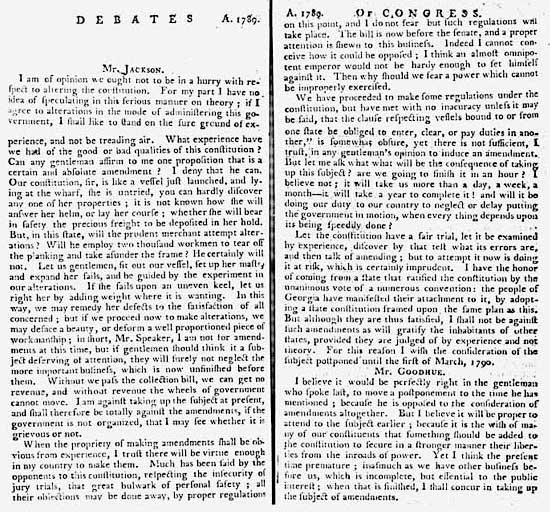 Speech by Rep. James Jackson of Georgia, June 8, 1789
Speech by Rep. James Jackson of Georgia, June 8, 1789(The Congressional Register, vol. I, page 416 -- Courtesy of the Library of Congress)
Text transcript of Rep. Jackson's speech.
|
"Our constitution, sir, is like a vessel just launched, and lying at the wharf, she is untried, you can hardly discover any one of her properties; it is not known how she will answer her helm, or lay her course; whether she will bear in safety the precious freight to be deposited in her hold. But, in this state, will the prudent merchant attempt alterations? Will he employ two thousand workmen to tear off the planking and take asunder the frame? He certainly will not. Let us gentlemen, fit out our vessel, set up her masts, and expand her sails, and be guided by the experiment in our alterations. If she sails upon an uneven keel, let us right her by adding weight where it is wanting. In this way, we may remedy her defects to the satisfaction of all concerned; but if we proceed now to make alterations, we may deface a beauty, or deform a well proportioned piece of workmanship . . . ." Rep. James Jackson of Georgia, June 8, 1789 It was popular to portray the Constitution as a newly-constructed ship about
to begin her maiden voyage as shown in the Jackson speech and at the beginning of the
present section.
The ship image gave the impression of a structure that could be adjusted to meet the needs
of the union as one would reset the sails or change the course of a ship to adjust to changes
in the weather. Another example of the use of this imagery was the Maryland ship Federalist,
which was constructed by Marylanders and sailed from Baltimore to Mount Vernon to notify
George Washington of the ratification in Maryland.
|
| Table of Contents |